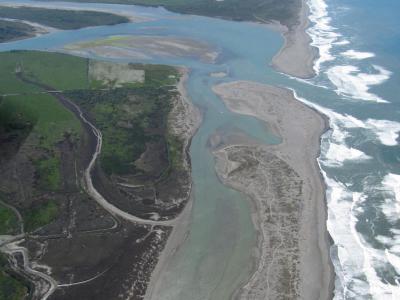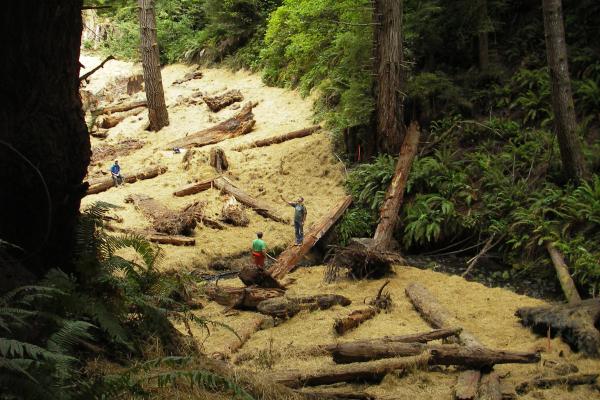Salmon Creek Watershed, from Headwaters Forest Reserve to Humboldt Bay National Wildlife Refuge
Field Tour Coordinators:
Mitch Farro, Pacific Coast Fish Wildlife and Wetlands Restoration Association
Chris Herbst, Pacific Watershed Associates
This field trip will visit sites both in the Headwaters Forest Reserve and on the Humboldt Bay National Wildlife Refuge. Salmon Creek is the third largest tributary to Humboldt Bay and has received increasing attention due to the development of a watershed- wide fisheries restoration effort including both public and private lands. An overview of both the watershed setting and the scope of the restoration efforts from the headwaters to the tidelands in Salmon Creek will be presented.
The 7,400-acre Headwaters Forest Reserve, publicly acquired in March 1999, is managed for conservation by the US Bureau of Land Management (BLM) and the California Department of Fish and Wildlife (CDFW). The Reserve includes approximately 3,000 acres of old-growth redwood forest and an additional 4,400 acres of second growth forest that had been logged and roaded prior to public acquisition. In 2004 the BLM and California Department of Fish and Wildlife completed a management plan for the Reserve which calls for the removal of almost all the remaining roads throughout the Reserve along with forest restoration and development of recreation trails.
The BLM, in partnership with the Pacific Coast Fish Wildlife and Wetlands Restoration Association (PCFWWRA), began removing roads and other sediment sources in the headwaters of Salmon Creek in 2000 and has continued this work through 2015. Participants will hike to representative road decommissioning project areas to discuss sediment source inventories, project prioritization, techniques, equipment, costs, effectiveness, and monitoring.
The Humboldt Bay National Wildlife Refuge at the mouth of Salmon Creek was established in the early 1970s primarily to provide important coastal habitat for migrating shorebirds and waterfowl. In 1988 over 1,000 acres of former tidelands along lower Salmon Creek and adjacent areas was acquired by the U.S. Fish and Wildlife Service for inclusion in the Refuge. Several efforts to improve instream habitat conditions have taken place over the last decade in lower Salmon Creek.
The field trip will visit the location of the major tide- gate replacements, salt marsh restoration and new tidal channel excavations and off-channel ponds constructed on Humboldt Bay NWR. The trip will provide the opportunity to explore the issues involved in the design, permitting, construction and monitoring of this tidal salmonid habitat project.


